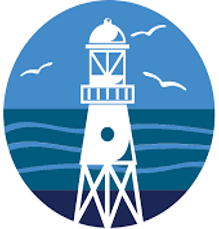A Proud History of Education
Our History
Whilst the Federation of The Whiteoak Academies is relatively new, both Hannah More Infants and Grove Juniors have been at the heart of education in Nailsea and North Somerset for over 200 years.
Please read below to discover more about our history of high quality education in the Nailsea community.
Hannah More
Who was Hannah More?

Hannah More was born in Fishponds in 1745, the fourth of five daughters of schoolmaster Jacob More and Mary Grace More. Described as a true heroine of Somerset history, she was a member of the group of women intellectuals called the Bluestockings and became a national celebrity of her time as an author, writer and philanthropist.
In 1758, her eldest sister opened a girl’s school in Bristol. Hannah was initially a pupil at the school and then became a teacher. At the age of seventeen she wrote a play, The Search after Happiness, for the girls at the school to perform. Around 1767, at about the age of 22 she became engaged to a local landowner, William Turner, owner of a house called Belmont, now part of the Tyntesfield estate, later acquired by the National Trust. Hannah and William never married.
In the spring of 1774, Hannah and two of her sisters journeyed to London, where they met actor-manager David Garrick and his wife Eva. In 1777, after much help and encouragement from Garrick, her tragedy, Percy, was staged at the Covent Garden Theatre. Hannah moved to a small house in Cowslip Green in Somerset where she continued to write. Hannah was active in the anti-slavery movement and her poem, Slavery, was published in 1788 to coincide with the first parliamentary debate on the slave trade. In 1789, at William Wilberforce’s instigation, Hannah and her younger sister Martha founded a Sunday school in Cheddar, the first of nine schools in Somerset.
Hannah More School
Hannah More School, Nailsea, was first established initially as a Sunday School on the 30th September 1791 at the Tithe Barn near Holy Trinity Church. The school opened on its present site on the 31st August 1972. As well as working among the poor, Hannah More continued her connections with polite society, and produced a series of conduct books, of which the most famous was Strictures on the Modern System of Female Education.
Hannah earned nearly £30,000 from her books, in view of the large sums of money she gave to charity during her lifetime, this figure is probably an under-estimate. She was one of the most successful writers, and perhaps the most influential woman, of her day. She died in September 1833, aged 88.
The New School Office
Grove Junior School
The nucleus of the present Grove Junior School was built in 1965 on its present site using the Tithe Barn as an annexe. It was extended in 1972 when Hannah More Infants’ School was built. Nailsea Parish Council had regularly urged the Local Authority to deliver these facilities due to the number of school age children in the town’s rapidly expanding population.


Both the new schools had their roots in Holy Trinity Church, or Old Church as it is known locally, as it predates the building on Silver Street, Christ Church, by several hundred years. The philanthropist and author Hannah More, having already established Sunday Schools in Cheddar and Shipham to combat the ignorance and discipline of the children of the miners was allowed by the Holy Trinity Vestry to establish a similar school near the church in 1792 with 140 pupils. These pupils would have ranged in age from infant to junior. By 1825 it had been rehoused in the old Tithe Barn, known then, and subsequently, as Grove or Grove Annexe.
This building, with various extensions, became Nailsea Parochial Secondary Modern School, with the younger pupils being taught at Four Oaks School in Silver Street. It continued in this way until its closure in 1963, by which time there was a new Grammar School in Nailsea (1959) and a Secondary Modern School at Backwell built in 1952. Once the senior pupils were transferred to schools elsewhere, Grove was allocated to junior pupils again.
Thus, the new Grove School took its name directly from the annexe keeping the continuity of educational provision in this area. There are references in the Greenhill Papers to a St Mary’s Grove and the immediate street names, St Mary’s Grove etc, reflect the fact but there is no knowledge among older, long term Nailsea residents or, more significantly, ecclesiastical officials as to how or why this originated. The area around the Tithe Barn, the original school since demolished, and the surrounding area have always been referred to as the Grove.
Although the reference to St Mary’s seems to have no basis in fact, there is a legend of a Saint Padarn or Paternus, a Welsh saint to whom the original 8th century Holy Trinity Church was dedicated. When a new junior school was mooted for Nailsea in 1899 the Holy Trinity Parish Council suggested this as a name. There was no support from the educational or ecclesiastical authorities for this. Grove might have been so named!
The old Grove Junior School logo relates to the coal and related glass industries which were so integral to old Nailsea. The occupation “collier” is the dominant one in the list of parental occupations in the earlier registers of the Grove schools. The nearest coal engine to the Grove was at the junction of Engine Lane and North Street.






